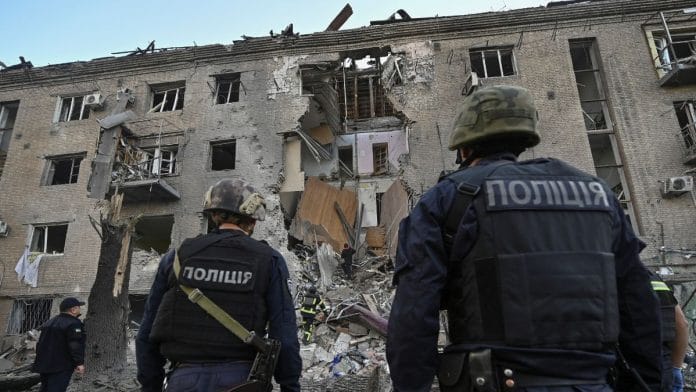New Delhi: Only a few days ago, in its ongoing war in Ukraine, Russia used the biggest-ever vacuum bomb — ODAB 9000. The vacuum bomb is also known as the thermobaric bomb. It is a fuel-air explosive device that is in use by the Russian military.
The recent bomb used by Russia in Ukraine is being called the “most powerful non-nuclear weapon in the world”.
“The word thermobaric is a portmanteau of the Greek words heat and pressure”, according to the Lieber Institute West Point. Thermobaric bombs are known to be used as much for their psychological effect as their destructive power. These weapons are known to have a more devastating impact than other explosives of the same size.
Russia is said to have used a similar bomb, known as the TOS-1A Solntsepek multiple rocket launcher, a potent, short-range thermobaric weapon system, back in February this year.
According to CNN, Russian rocket launchers can launch up to 30 rockets armed with thermobaric warheads. In March, the UK’s defence ministry said that Russia used thermobaric bombs in Ukraine.
At the time, Russia mobilised 30 rockets armed with thermobaric warheads in eastern Ukraine. According to the Wall Street Journal, “Russia’s TOS-1A vacuum bomb is so deadly that analysts advised Ukraine to destroy the weapons before Russia could use them”.
It was in 2007 that Russia first tested such a bomb. This bomb was known as the ‘Father of All Bombs’ and was said to be larger than the US’s Massive Ordnance Air Blast (MOAB), also called ‘Mother of All Bombs’.
Even though Russia has deployed this kind of bomb earlier in Ukraine, the country used this bomb in Ukraine again in early October. The footage of the bombing that went viral shows a vacuum bomb striking the town of Vovchansk in Ukraine’s northeastern Kharkiv Oblast.
According to a report in Newsweek, a thermobaric bomb uses oxygen to generate high-temperature combustions, which cause a massive explosion. The bomb was purportedly used to “demoralise” the Ukrainian troops. Russia’s strike in Vovchansk came only days after its troops were driven from the town’s Volchansky chemical plant by Ukrainian forces, the report said.
Thermobaric weapons consist of a fuel container and two separate explosive charges, according to the non-profit Centre for Arms Control and Non-Proliferation. A report by the centre says the effects of such bombs are “compounded” in enclosed spaces, making them highly effective in buildings.
One of the reasons for the International Criminal Court (ICC) to open an investigation into potential war crimes in Ukraine is the use of thermobaric weapons by Russia.
The Russian Army’s nuclear, biological and chemical protection troops operate the TOS-1A. Russia is also known to have deployed the weapon in Chechnya and Syria.
According to the European Security and Defence, these weapons have been used in Afghanistan and countries in West Asia, including during the Syrian Civil War. It was used in a terrorist attack in Bali, Indonesia, as well. The use of a fuel-air explosive (FAE)-based weapon was first recorded in Vietnam in 1967 at a time when the US Marine Corps had been investigating a new way of clearing minefields, the report adds.
No nation has so far declared the thermobaric weapons to be unlawful.
According to a Lieber West Point report on whether thermobaric weapons are lawful, they are “not unlawful” as a means of warfare. But, it added that the method of employing the weapons could be a point of contention under international law.
(Edited by Madhurita Goswami)
Also Read: Iran’s Shahab-3, India’s Agni-1 to US’s Minuteman III—ballistic missile arsenals, who has what






